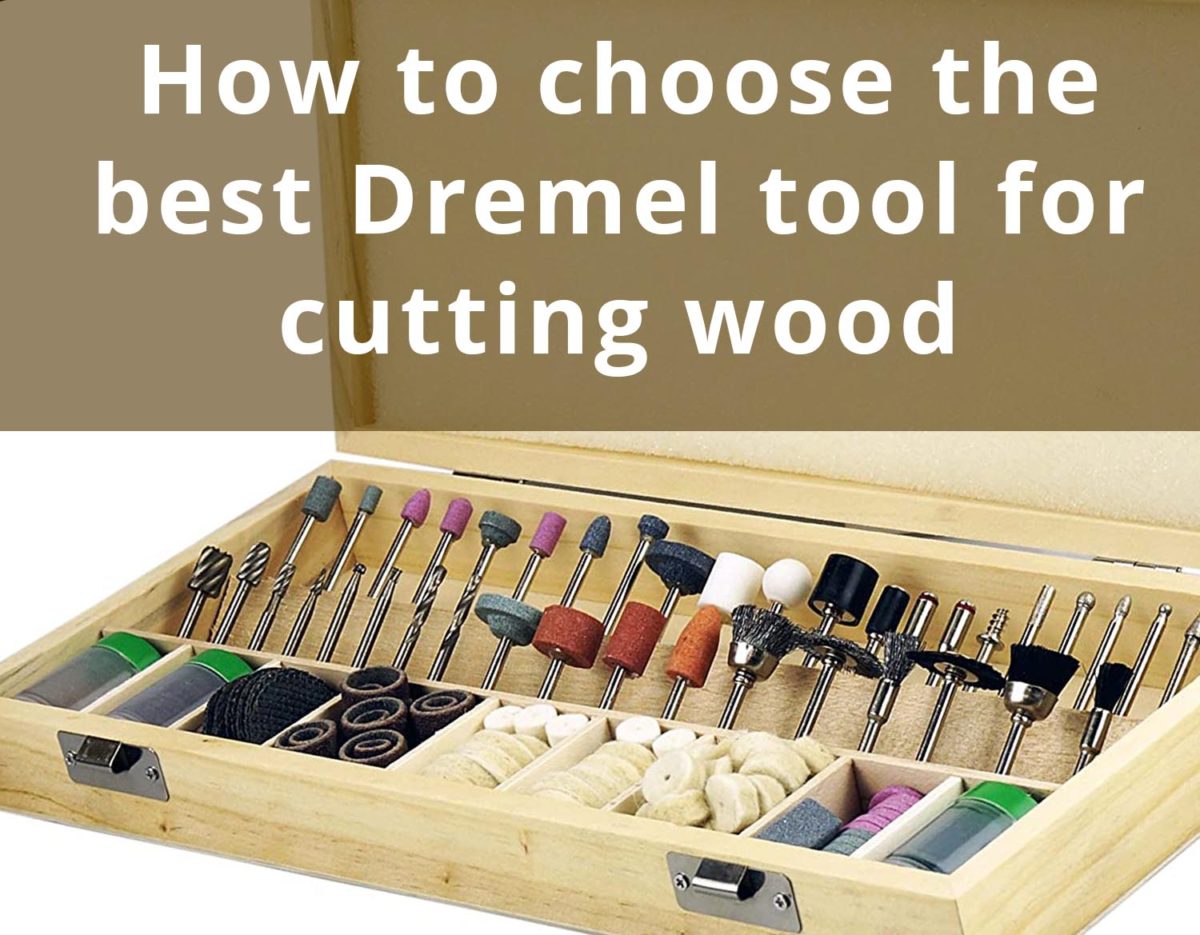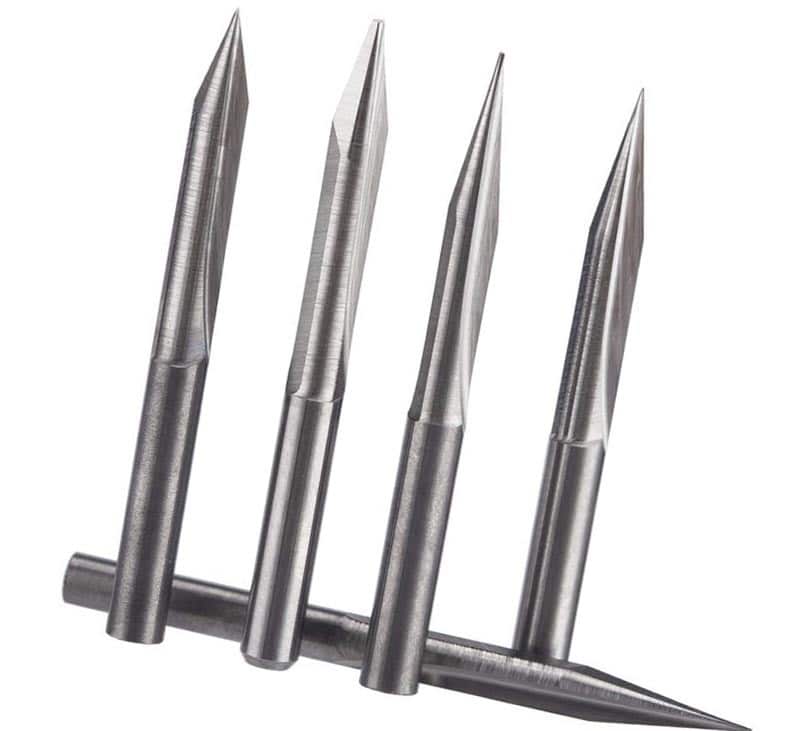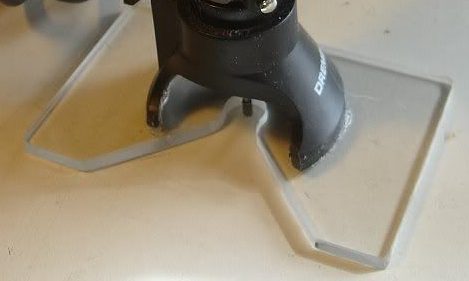Table of Contents
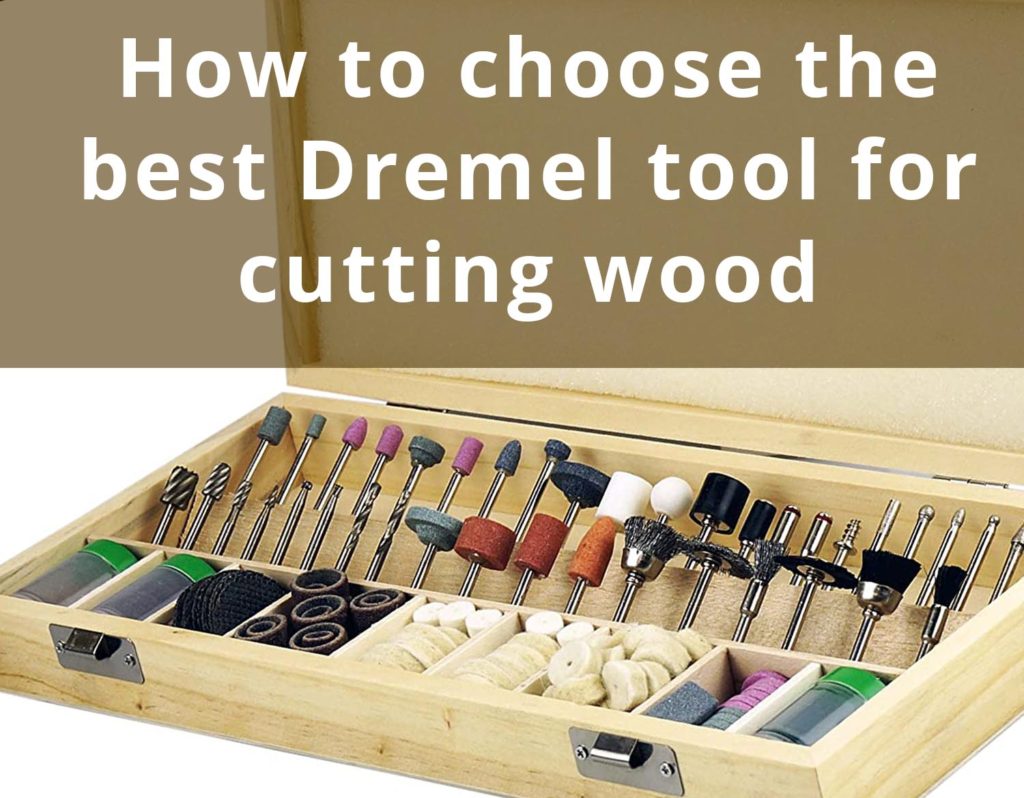 When choosing the best Dremel bit for cutting wood you should consider the scope of a work. Compact rotary craft machines are widely used for power cutting (carving) and they are especially useful for fine detail. But roughing usually requires another tool such as a carving knife, or gouge, band saw, chisel, gouge or a belt sander. Main application of the Dremel cutting tools is work with fine details.
When choosing the best Dremel bit for cutting wood you should consider the scope of a work. Compact rotary craft machines are widely used for power cutting (carving) and they are especially useful for fine detail. But roughing usually requires another tool such as a carving knife, or gouge, band saw, chisel, gouge or a belt sander. Main application of the Dremel cutting tools is work with fine details.
Best types of Dremel bits for cutting wood
Most common bits
Minimum set of commonly used bits for a DIYer who use Dremel occasionally includes:
- sanding drums (180 grit and 220 grit)
- Fiber and Diamond cut off wheel
- Wood Rasp bit
- Ball grinding stone
- Grinding stone
The problem with Dremel bits though, is that you often just have to have them even if you don’t need them for cutting wood.
Ball nose Dremel bits for cutting wood
Check Amazon

The ball nose bit is nice for wood cutting and hand finishing. I think, everyone should use this basic tool. I think, solid carbide ball noses are best Dremel bits for cutting wood. In my projects I usually start with an 1/8″ bit, an use 1/8″ straight cutter after. Buy several ones, you’ll definitely break one or two as you learn the proper RPM and speed to move the Dremel. With smaller bits you can achieve finer detail but they are much easier to break. Depending on the carvings depth you may need to buy longer bits, but otherwise the shorter bit is, the better to reduce runout.
Up and Down cutting spiral bits
Cutting spiral bits leave nice clean edges and comes as small as you want. There are mostly two- and four-flute cutters on the market. Two-flute ones work with wood, but with slower feed rates. Wood chips are easy to cut, so you can choose four-flute cutters, they cut twice as much at the same spindle speed. Four-flute spirals have less room for the chips, but it’s enough. The wood is pretty tough, so the chips are much easier to deal with a four-flute bit won’t clog).
Some Dremels and clones have a spiral bit like a RotoZip tool. I have a base which turns the Dremel into a mini-router. They work OK but for cutoffs, the coping saw works well.
Sanding drums
I use the larger of the 2 sanding drums that comes in official pack. You can also buy sanding drums in convenient little plastic boxes to replace as they wear.
The drums work great. They are really great Dremel bits for cutting wood.
V-carving bits
Engraving is often done with V-Carving or “engraving” bits, most of them are single flute tools at angles like 10°, 20°, 30°, 45°, 60°, 90°. The less the angle is, the more precise and fine the engraving lines you create. For example, a 10-20° cutter is great for cutting tracks on PCBs. 30° cutter is the best Dremel bit for cutting small text on wood. Finding the right cutting depth for the required cutting width requires some practice when manually carving small details.
Helper gadgets
Router base
On nice and flat surfaces a small “Dremel router base” tool works great when cutting wood, plexiglass and plywood. It helps you control the carving depth pretty well. It’s perfect for light work: enlarging pickup cavities, making pickguards, etc. Just go slow and don’t try cut too much material at a time and it should do just fine! Saved me from buying a full-sized router that would be overkill for what routing needs I have.
The only problem is the router base sometimes not allows the bit to plunge deep enough into the wood to get to the required depth. If you use the router, make sure the attachment and length of bits allow routing to proper depth.
Flexible shaft
Having a flex shaft makes work much easier. You should definitely try this. The flex shaft doesn’t weight as much, and is way easier to control if you can hang the power tool above your workspace instead of leaving it sitting on the counter.
Moreover, I always tend to block the vent holes on my Dremel when I use it without the flex shaft, while trying to steady it. It makes the tool really hot quikly.
Coping saw
Believe it or no, for small carving jobs, rocking the cut around a curve, short chunks, the coping saw is the best, economical and quiet tool. It’s blades are reversible, end-to-end and cuts with the push or pull stroke. You can buy the blade with any numbers of teeth per inch, then feed the blade through a small hole and reassemble the saw for blind cutouts. They are cheap enough to buy several and hang them on a nail where you like to carve.
Dremel Alternative for cutting wood
The Dremel takes less or equal 1/8” diameter bits. GreatNeck and Kutzal tools and other also come in ¼” and that is too large to fit into your machine.
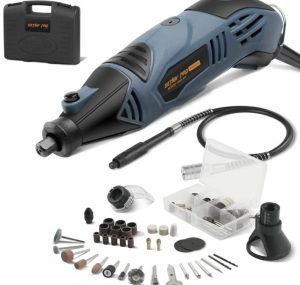
We don’t putting Dremel machines down here. They run a lot faster speeds than, for example, the Foredom shaft tools. And so a 1/8” Kutzal tool going 30,000 rpms works a lot more aggressive than the same one going 18,000. Most of those little machines are the perfect size for carving wood.
For some projects you need even more rpm. For example when using a Dremel and a 1/32 round bit for making small plaques the Dremel’s max of 10,000 rpm isn’t enough to do a lot, the “dental drill” power tool turn at about 400,000 rpm and it is MUCH more versatile.
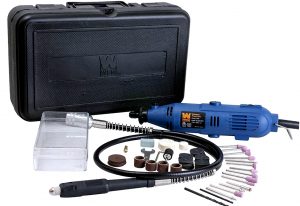
Powerful tools like GreatNeck is great for knocking out bigger wood sections and a dremel cutter for the small channels and cutting in side pockets. GreatNeck removes wood fast, but don’t bury the bit in too much or it will kick like a mule. But this roughout work leave deep grooves and after you get close to the shape you need, switch to a finer bit to cut off all those grooves, then finally a sanding or diamond bit.
So, you can perform fine cutting with a Dremel and high-quality bits for wood. Nevertheless, the higher power of the WeCheer/Foredom means less motor stress and heating, therefore longer life and sometimes even less stress on your wrist. They are not as portable, but more powerful tool also may use bigger (and in some cases, better) bits than you can use with a Dremel.
Tips and tricks
If you are getting tearing along the edge of your cuts, you could try running a ‘roughing’ then a ‘finishing’ cut along them.
The Roughing cut should be set to remove 90-95% of the material and can be done quickly and will leave a rough edge for you. This is similar to how you might cut out a complex shape with scissors from paper.
The Finishing cut would be at a slower feed rate, but would only be removing a very small amount of material, so the surface finish (and possible tear out) would be minimized.
What is the best Dremel bit for cutting depends on the characteristics of the wood. The softer wood is easily cut, and if you have a sharp blade, you will also get more control. Please note that it is very easy to lose control of the surface, a variable speed device helps a lot.
The Dremel won’t take in a chuck a tool for cutting wood if it’s larger than a 1/8” so take in the mind, what size you order.
Carbide cutters cost more than steel ones, but they will definitely stay sharp a lot longer.
Safety first
Some wood species are really dangerous to inhale, and yet others have varying degrees of irritation to your respiratory system. So use dust masks that fits you good. Choose one that goes with the gear your frequently wear with it: ear protection, glasses should fit well together, especially if you are wearing them for a long time.
Also be smart and always wear ear protection: ear plugs or over the ear muffs. Some guys like noise canceling Bluetooth headphones that allows to talk with a noise canceling without having to take off all the head gear. But choose first for protection, then comfort.
Finally eye protection. Try safety glasses made of glass, they stay clear longer and last longer since glass is very difficult to scratch compared to plastic.
Conclusions
Even if you have a more powerful tool, the Dremel is really good for final sanding and detailed work. Yes, it is a bit slower, but much more precise and convenient.
Best and “must have” Dremel bits for cutting woods are 180 and 220 grit sanding drums, cut off wheels, wood rasp bits, ball grinding bits and grinding stone.
